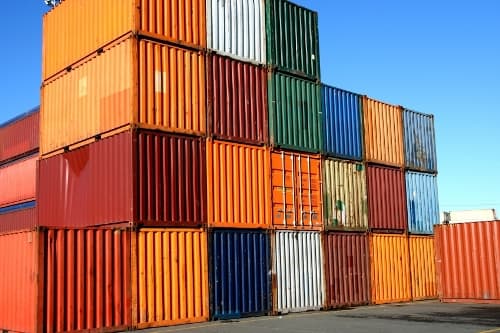Inexpensive Acoustic Sensor Detects Stowaways In Cargo Containers
Human trafficking is of the most rampant international crimes. We often read news stories where international traffickers transport people from one country to another most commonly in shipping containers. Tracing such metal cargo containers among millions of them across ports is not an easy task since most victims are threatened to keep their mouths shut. Although law enforcement authorities across the world have access to multiple high-tech devices such as passive millimetre wave sensors, microwave radar systems and detection gamma rays they have their own downsides, the major one being their high costs. So when Franklin Felber at Starmark, a scientific consulting company based in San Diego set out to find a low cost solution of this problem he turned to acoustic sensors which he then modified to detect human beings.

Acoustic sensors have been at our disposal since the last decade but they were never powerful or sensitive enough to detect human beings inside shipping containers. Felber started his work with the help of commercial off-the-shelf piezoelectric transducers that change their shape and produce acoustic signals when subjected to high voltage. There were however a few problems. It was difficult to produce 3000 volts which often had catastrophic effect on the transducer itself. The unit also lost its resonant properties when it was attached to metal plates of a shipping container. Noticing the shortcomings of these commercial products Felber decided to build one of his own.

Felber build an acoustic transducer that was powered by a standard nine-volt battery. His apparatus consisted of a mechanical impact transmitter which is essentially a hammer that bangs repeatedly on a metal disc to produce a specific frequency that is transmitted across the air inside the shipping container. The receiver unit that is attached to the other end picks up each pulse and a signal processor checks for deflections. The tuned frequency can detect the slightest of movements including the rising and falling of a person’s chest when he/she is breathing. Even though his product costs $10,000 it is comparatively cheap and portable than the existing devices found in the market. Felber claims that his acoustic device is also faster than others as it is able to scan at a rate of two cargo containers in one minute.
To know more about this acoustic sensor you can read his paper on the #-Link-Snipped-# website and its coverage on #-Link-Snipped-#.

Acoustic sensors have been at our disposal since the last decade but they were never powerful or sensitive enough to detect human beings inside shipping containers. Felber started his work with the help of commercial off-the-shelf piezoelectric transducers that change their shape and produce acoustic signals when subjected to high voltage. There were however a few problems. It was difficult to produce 3000 volts which often had catastrophic effect on the transducer itself. The unit also lost its resonant properties when it was attached to metal plates of a shipping container. Noticing the shortcomings of these commercial products Felber decided to build one of his own.

Felber build an acoustic transducer that was powered by a standard nine-volt battery. His apparatus consisted of a mechanical impact transmitter which is essentially a hammer that bangs repeatedly on a metal disc to produce a specific frequency that is transmitted across the air inside the shipping container. The receiver unit that is attached to the other end picks up each pulse and a signal processor checks for deflections. The tuned frequency can detect the slightest of movements including the rising and falling of a person’s chest when he/she is breathing. Even though his product costs $10,000 it is comparatively cheap and portable than the existing devices found in the market. Felber claims that his acoustic device is also faster than others as it is able to scan at a rate of two cargo containers in one minute.
To know more about this acoustic sensor you can read his paper on the #-Link-Snipped-# website and its coverage on #-Link-Snipped-#.
0
